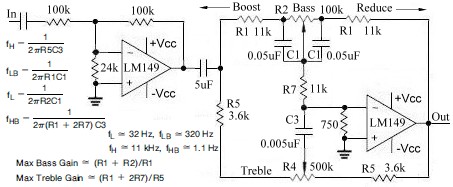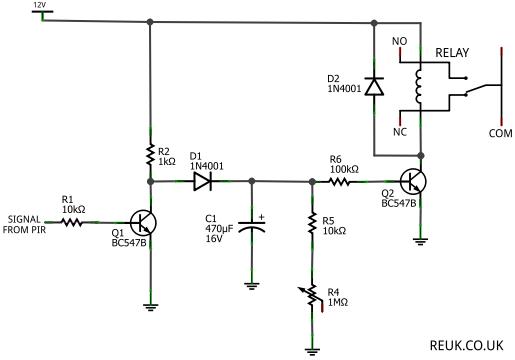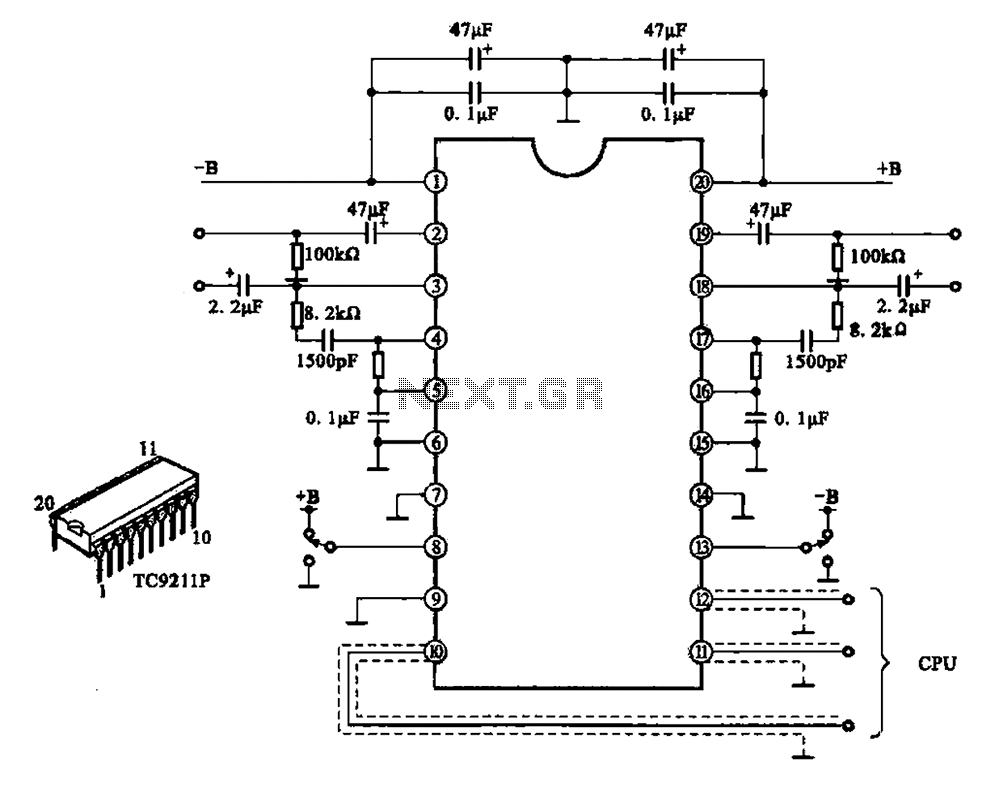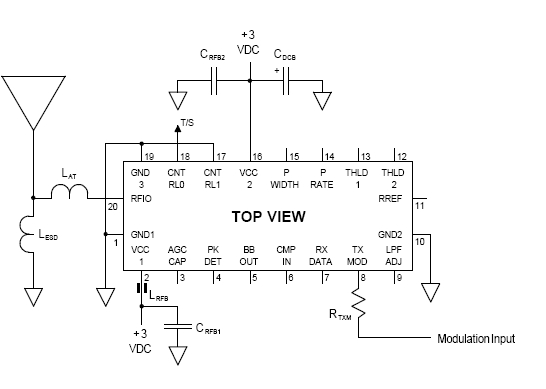
Electronic Cw Bug Keyer Circuit

This keyer utilizes skin conductivity to emulate the traditional mechanical CW bug keyer. When the dit paddle is activated, the bias on the inverter, IC1-a, is routed to ground, resulting in a logic high output. This triggers oscillator sections CD to create a low-frequency square wave keying signal Q1 for a succession of dits. Additionally, when the dah paddle is activated, section b generates a logic high, turning on keyer Q1.
The described keyer circuit operates by leveraging the principle of skin conductivity, which allows for a touch-sensitive interface that mimics the functionality of a mechanical keyer. The core component, an inverter labeled IC1-a, plays a pivotal role in detecting the paddle activation. When the dit paddle is touched, it effectively shunts the bias voltage to ground. This action results in a logic high output from the inverter, which serves as a control signal for the subsequent oscillator stages.
The oscillator sections, denoted as CD, are responsible for generating a low-frequency square wave output. This square wave acts as a keying signal, identified as Q1, which corresponds to a series of dits. The frequency of the square wave can be adjusted based on the design parameters of the oscillator circuit, allowing for customization of the dit duration.
In parallel, the dah paddle is connected to section b of the circuit, which functions similarly by producing a logic high when activated. This output directly drives keyer Q1, ensuring that a longer keying duration is established for dahs. The interaction between the two paddles allows for seamless operation, where the user can produce Morse code by simply touching the respective paddles.
Overall, this keyer circuit exemplifies a modern adaptation of traditional telegraphy methods, providing an intuitive and responsive mechanism for generating Morse code signals through simple touch inputs. The design emphasizes reliability and ease of use, making it suitable for amateur radio operators and enthusiasts seeking a tactile keying experience. This keyer uses skin conductivity to simulate the old-fashioned mechanical CW bug keyer. When the dit paddle is touched the bias on the inverter, ICl-a is shunted to ground, and it produces a logic high, causing oscillator sections CD to generate a low-frequency square wave keying Ql for a series of dits. When the dah paddle is touched, section b produces a logic high, driving keyer Ql on. 🔗 External reference
The described keyer circuit operates by leveraging the principle of skin conductivity, which allows for a touch-sensitive interface that mimics the functionality of a mechanical keyer. The core component, an inverter labeled IC1-a, plays a pivotal role in detecting the paddle activation. When the dit paddle is touched, it effectively shunts the bias voltage to ground. This action results in a logic high output from the inverter, which serves as a control signal for the subsequent oscillator stages.
The oscillator sections, denoted as CD, are responsible for generating a low-frequency square wave output. This square wave acts as a keying signal, identified as Q1, which corresponds to a series of dits. The frequency of the square wave can be adjusted based on the design parameters of the oscillator circuit, allowing for customization of the dit duration.
In parallel, the dah paddle is connected to section b of the circuit, which functions similarly by producing a logic high when activated. This output directly drives keyer Q1, ensuring that a longer keying duration is established for dahs. The interaction between the two paddles allows for seamless operation, where the user can produce Morse code by simply touching the respective paddles.
Overall, this keyer circuit exemplifies a modern adaptation of traditional telegraphy methods, providing an intuitive and responsive mechanism for generating Morse code signals through simple touch inputs. The design emphasizes reliability and ease of use, making it suitable for amateur radio operators and enthusiasts seeking a tactile keying experience. This keyer uses skin conductivity to simulate the old-fashioned mechanical CW bug keyer. When the dit paddle is touched the bias on the inverter, ICl-a is shunted to ground, and it produces a logic high, causing oscillator sections CD to generate a low-frequency square wave keying Ql for a series of dits. When the dah paddle is touched, section b produces a logic high, driving keyer Ql on. 🔗 External reference





